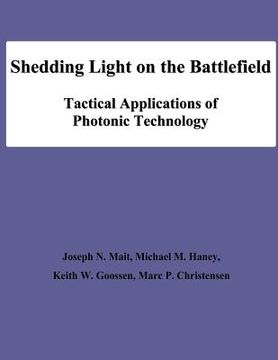Shedding Light on the Battlefield: Tactical Applications of Photonic Technology (en Inglés)
Reseña del libro "Shedding Light on the Battlefield: Tactical Applications of Photonic Technology (en Inglés)"
Military applications of optical technology have a long history. For over 300 years, telescopes and binoculars have extended the range of a commander's vision. Periscopes allow submariners to view surface activities while submerged and, during World War II, the Norden bombsight provided American bombardiers accuracy that, although crude by today's standards, was unparalleled for its time. Since the invention of the laser in 1960 and the light emitting diode in 1965, advances in electronics have spilled over into optics and brought opto-electronics to the battlefield. Shortly after its invention, the laser was used to guide munitions in Vietnam. Night vision technology also made its first battlefield appearance in Vietnam. More sophisticated infrared imaging gave coalition forces in Operation Desert Storm a critical advantage in night operations. Advances in optics have enhanced air operations with cockpit head-up displays based on the principles of holography. Communication systems also continue to benefit from advances in optics. The term photonics derives from the photon, the elementary particle of light. In electronic systems, the electron carries information. In photonic systems, it is the photon. The term photonics is also used to distinguish between systems that use conventional optical elements to form images and those that use light to communicate, compute, and store information. One of the first applications of photonics to communications was the photophone, demonstrated by Alexander Graham Bell in 1880, which used light beams to transmit information wirelessly. Bell believed the invention of the photophone was more significant than that of the telephone, but it took almost a century for light to be used in communication; the first widespread deployment of optical fiber began in the 1970s. The recent downturn in the telecommunications industry was fueled in part by unmet expectations in the growth of optical fiber communications. However, the downturn was due to poor market predictions, not poor technology. The dependence of the GIG on optical fiber indicates strong support for photonics as an enabling technology for transformational communications. Although the application of optics to military communications is as ancient as warfare itself, the application of photonics is relatively more recent. Here we address the application of photonics to sensing and information processing for intelligence gathering, surveillance, and reconnaissance (ISR), in which the efficient generation and delivery of optically-encoded information is exploited. The outer shell of future military networks will be populated by sensors, and the Department of Defense (DOD) is pushing to provide sensor capabilities to tactical commanders. However, in tactical operations, bandwidths are reduced2 and operational urgency prevents data from being transmitted to ground stations for subsequent processing. To take full advantage of new capabilities, sensors must be able to collect data and rapidly extract from it and transmit actionable information. This can be accomplished if information is generated as close to the sensor platform as possible. However, tactical platforms, e.g., mini-unmanned aerial vehicles, place a premium on the size, weight, and power requirements of a sensor package. Other potential platforms include unattended ground sensors, unmanned ground vehicles, and even dismounted soldiers. It is in such applications, where the complexity of processing is high and the physical constraints on the system are limiting, that photonics offers the greatest advantage over electronics. The advantage lies in the fact that, whereas two electrons in close proximity affect one another, two photons do not. advantage over electronics in meeting this objective.

